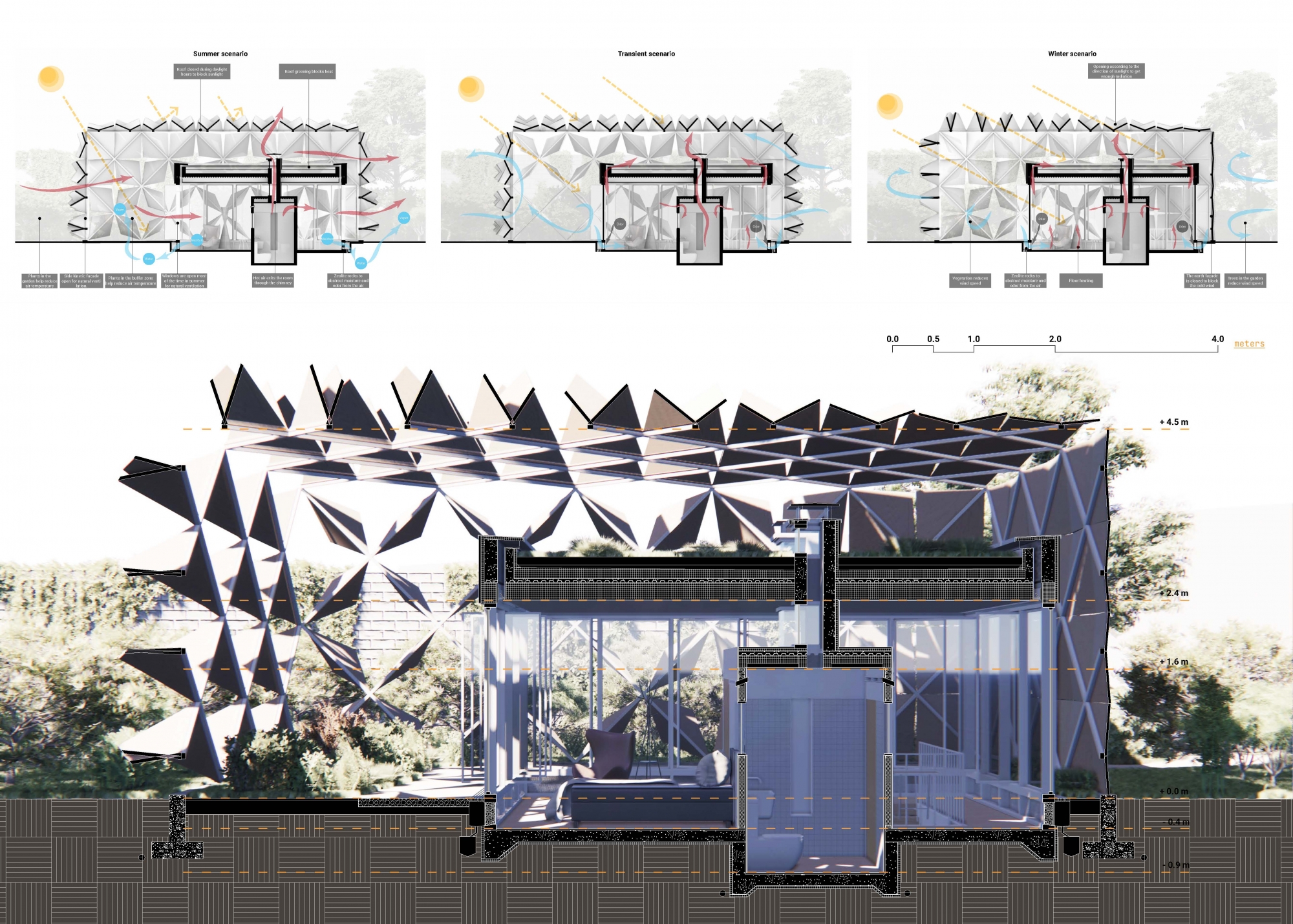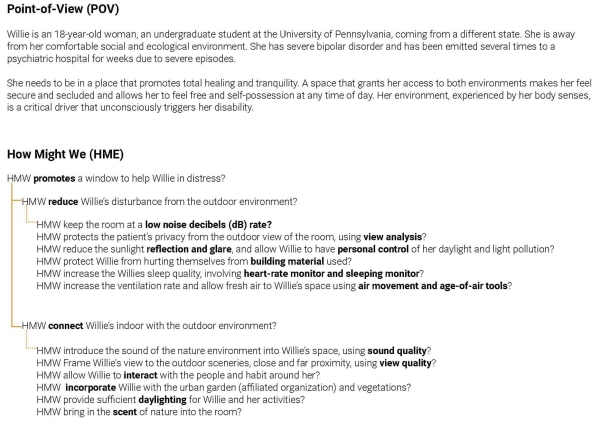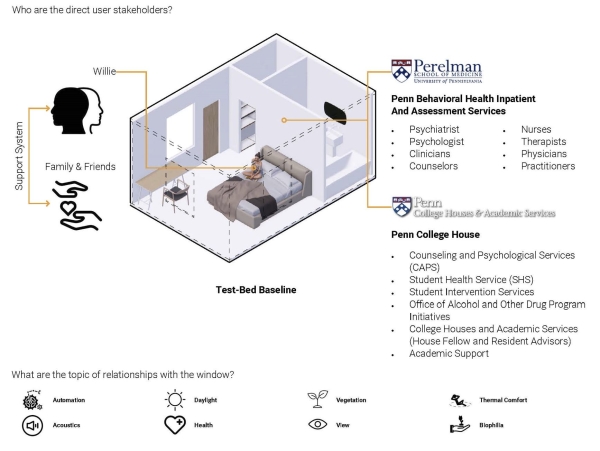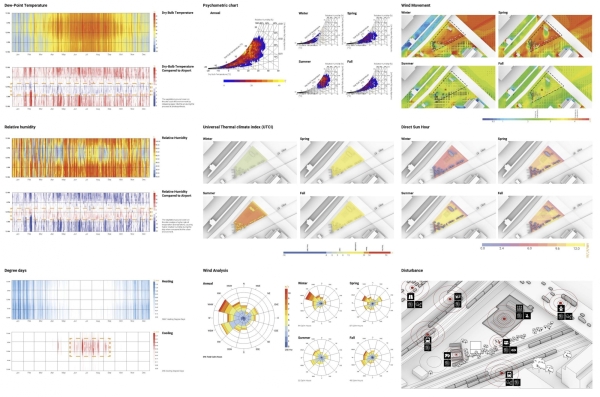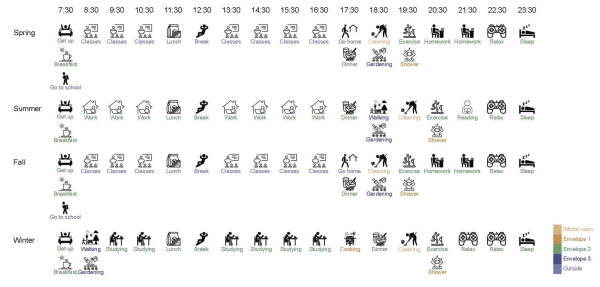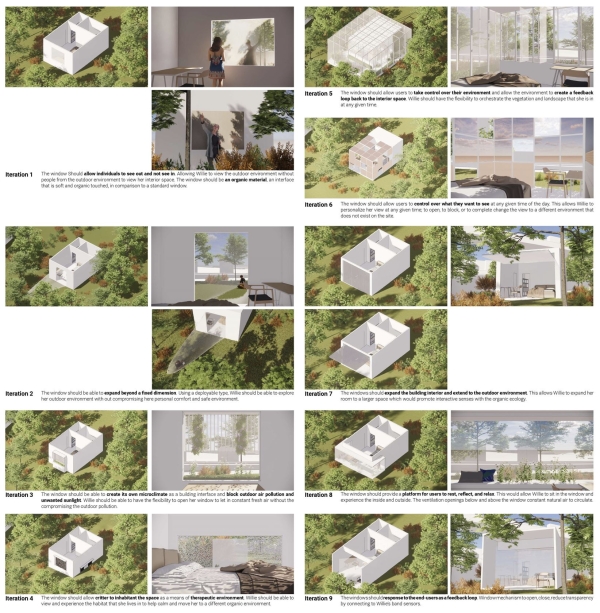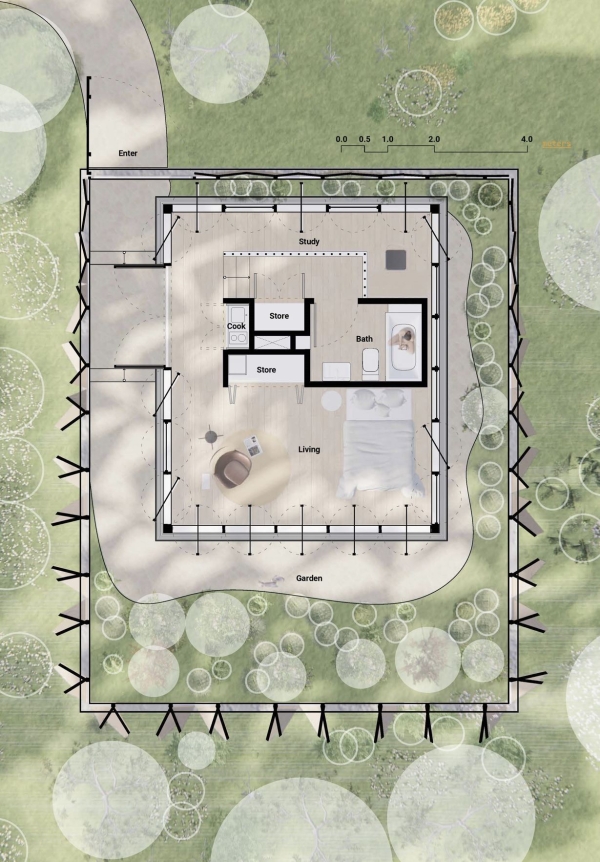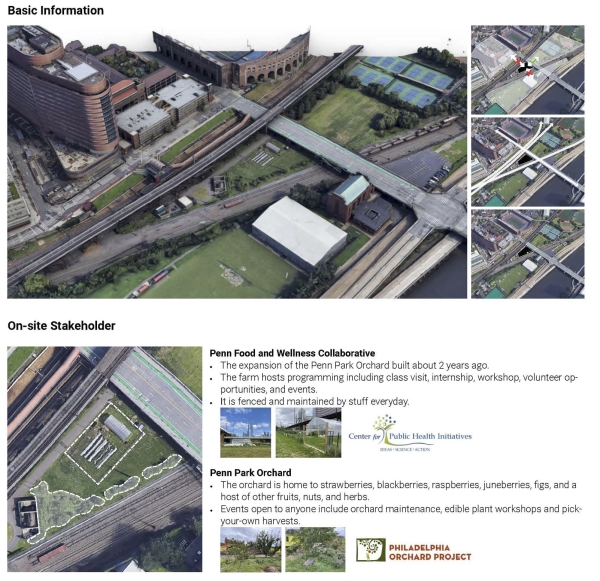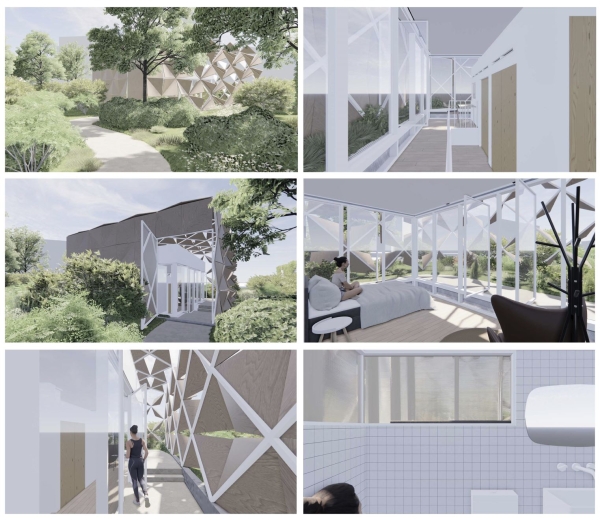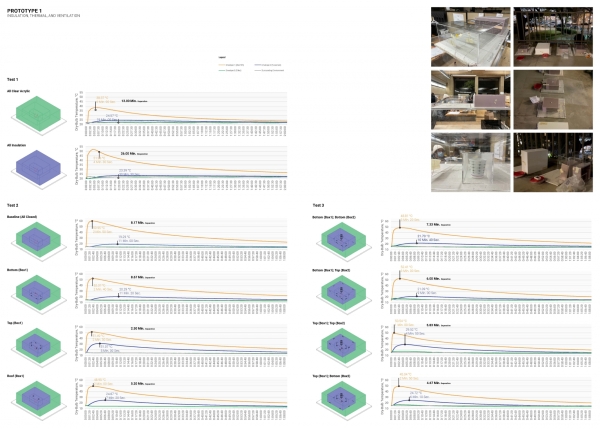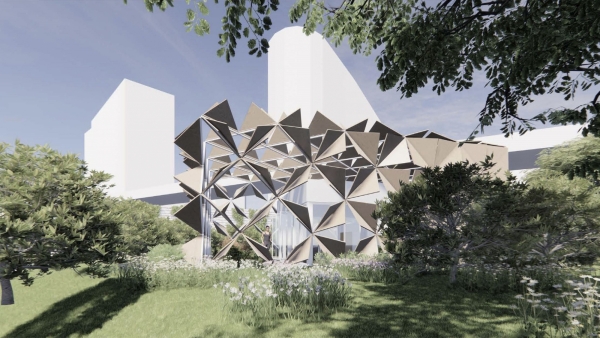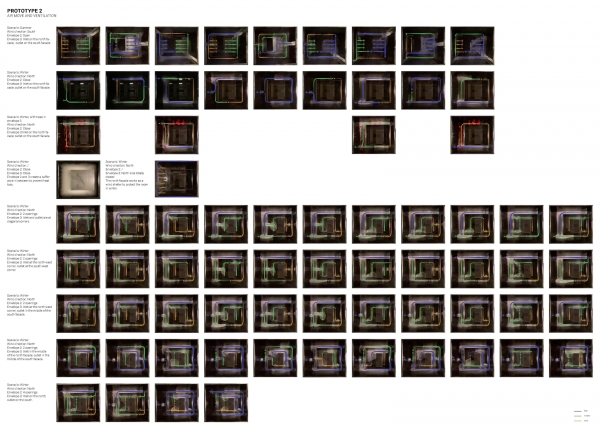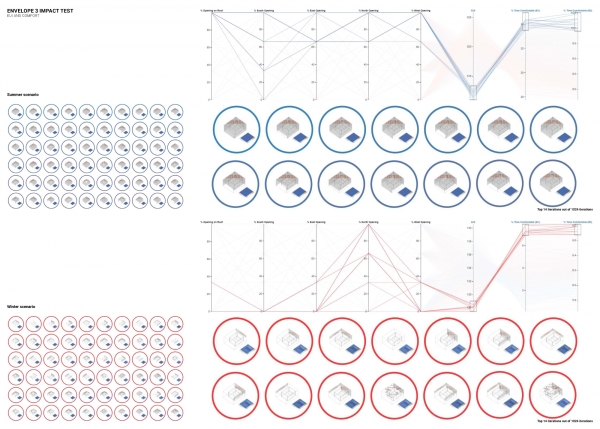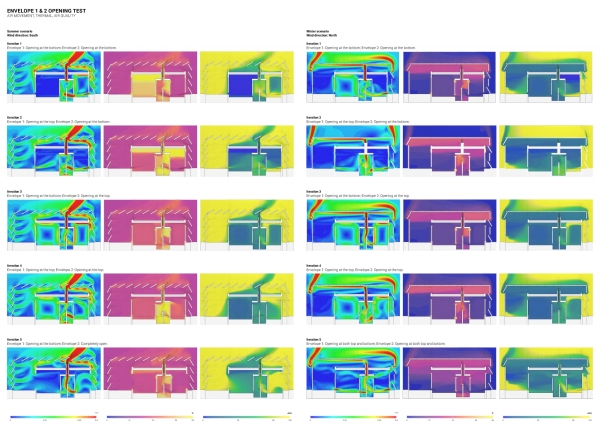The NEST at PENN: Research Studio, 2021
- Allen Suwardi
- Li Jiewei
- Yan Qi
Location: Philadelphia
This is a psychiatric living lab that is part of the University of Pennsylvania Behavioral Health Inpatient and assessment Services and Collage House. This lab is a testbed designed for special needs students, particularly long-term mental disorders who require outpatient assisted living. Willie, an individual with bipolar disorder, will be living in this lab.
Today, the normalization and advancement in mental health are at the forefront of society. Researcher Dr. Evangela Chrysikou has focused her work on human perception mechanism, evolving architecture as a space and place that is an interaction between the physical context and physiology (Chrysikou, 2019, pp. 3–4). In addition, the Center for Health Design in 2018 suggested the creation of a safe and therapeutic environment to support the healing process of patients and their families (Card et al., 2018, p. 4).
The Nest is the state-of-the-art psychiatric care that promotes therapeutic design and environmental engagement. The lab consists of three different envelopes built from one layer to the other. This creates thermal nesting on each envelope and creates a temperature cascade in the lab. The envelope has different spatial uses that drive the interface's design and function. Envelope 1 is the first layer found at the innermost part of the lab, designed as the hearth with an interface promoting warmth. Envelope 2 is the second layer that fusion-ize environmental assets, designed to allow the indoor space to interact with the outdoor environment. Envelope 3 is the last layer that filters out environmental clutter by a playful kinetic interface. How could a series of envelopes, 1, 2, and 3, with different window treatments be an environmental probe to suggest a feedback loop which would benefit Willies' therapeutic sensation?
To answer these questions, there are three research methodologies used.
- Radiant temperature using the 3-step thermal nesting boxSalmaan
Craig from McGill University introduced the research behind cascading temperature between different spaces with different temperatures (Suerich-Gulick et al., 2021, p. 3). To understand temperature cascade, various models were investigated with different opening locations on envelopes 1 and 2. Boiling water was placed in the hearth of envelope 1, and models were placed outdoor at Philadelphia's early winter night. Radiant heating performance and balance between boxes will be seen over time - Ventilation study using wind tunnel
With the opportunities to have openings on envelopes 2 and 3 to bring the environment phenomena into the lab, a model with various kinds of opening options is tested with dry ice. Wind movement moving through the spaces is captured using video recording. - Buoyancy study using computational fluid dynamic (CFD)
To understand the building system further, after both thermal nesting box and wind tunnel studies, the outcome will be analyzed and fed to the lab design. Using a 2-dimension CFD simulation would feedback the lab's performance with the changes based on the first two studies. Temperature, radiant temperature, ventilation, and buoyancy will be studied and analyzed.
Using all three research mythology, we hope that the feedback loops may enhance the visual therapeutic quality and provide sufficient thermal therapeutic sensation for Willie.
Sources
Card, A., Taylor, E., & Piatkowski, M. (2018). Design for Behavioral and Mental Health: More Than Just Safety. The Center for Health Design. https://www.healthdesign.org/insights-solutions/design-behavioral-and-mental-health-more-just-safety
Chrysikou, E. (2019, May 29). Introduction on the day and overview of BREI research on psychiatric building [Interactive Workshop]. https://www.ucl.ac.uk/bartlett/real-estate/events/2019/may/architecture-mental-health. https://discovery.ucl.ac.uk/id/eprint/10088749/3/Chrysikou%20Architecture%20questions%20for%20Interview%20Psychologist.pdf
Suerich-Gulick, F., Halepaska, A., & Craig, S. (2021). Cascading temperature demand: The limits of thermal nesting in naturally ventilated buildings. Building and Environment, 108607. https://doi.org/10.1016/j.buildenv.2021.108607
Billie Faircloth, Critic
Mrinalini Verma

